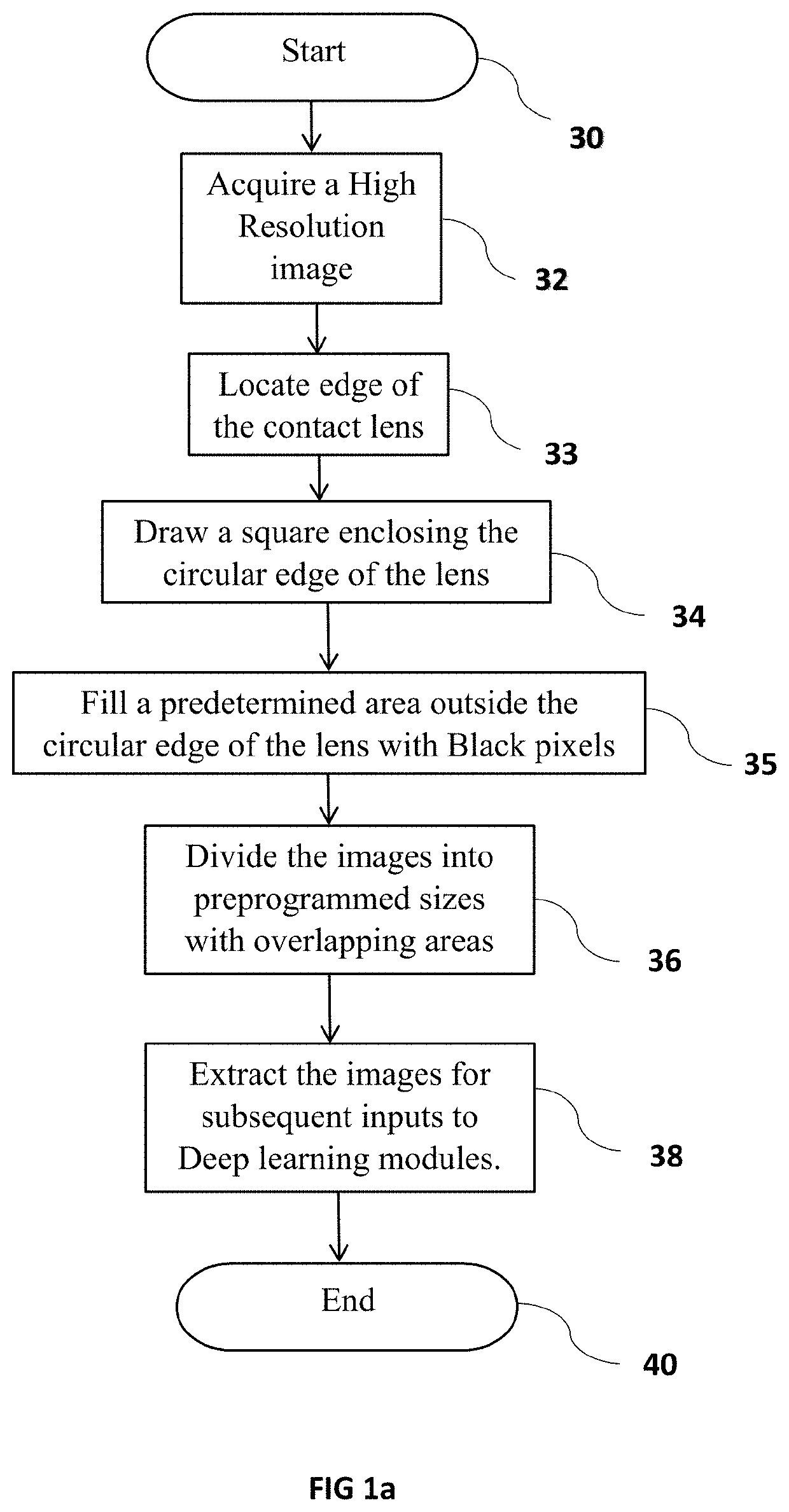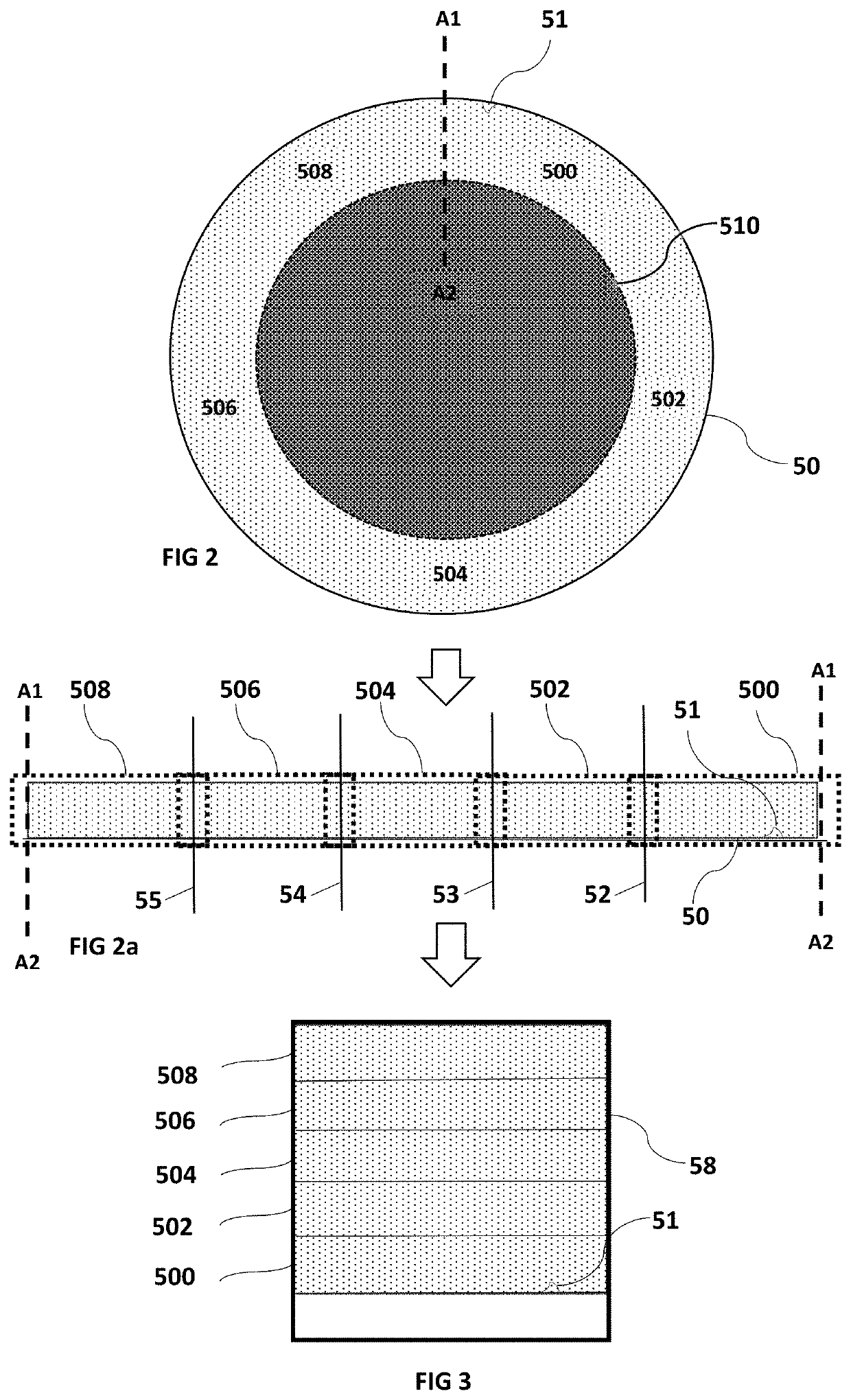Computer implemented process to enhance edge defect detection and other defects in ophthalmic lenses
a technology of edge defect detection and ophthalmic lens, which is applied in image enhancement, instruments, biological models, etc., can solve the problems of reducing productivity, reducing the efficiency of critical defect data, and high resolution cameras that only add to the productivity decline, so as to reduce or re-arrange the image, eliminate redundant pixels surrounding the edge, and facilitate processing
- Summary
- Abstract
- Description
- Claims
- Application Information
AI Technical Summary
Benefits of technology
Problems solved by technology
Method used
Image
Examples
Embodiment Construction
[0024]In the following description of the preferred embodiments of the present invention, reference is made to the accompanying drawings that form a part hereof, and in which is shown by way of illustration specific embodiments in which the invention may be practiced. It is understood that other embodiments may be utilized and structural changes may be made without departing from the scope of the present invention.
[0025]A general flow chart of the system and method according to the invention is shown in FIG. 1. The system 10 begins by acquiring a high resolution image of a contact lens in acquiring process action 12. The acquired image is then processed to extract the lens circular edge in extraction process action 14. The extracted circular edge is then transposed to a Horizontal image in transposition process action 16. In elimination process action 18, irrelevant pixel data around the horizontal edge is eliminated to minimize the size of the image. The horizontal edge image is su...
PUM
 Login to View More
Login to View More Abstract
Description
Claims
Application Information
 Login to View More
Login to View More - R&D
- Intellectual Property
- Life Sciences
- Materials
- Tech Scout
- Unparalleled Data Quality
- Higher Quality Content
- 60% Fewer Hallucinations
Browse by: Latest US Patents, China's latest patents, Technical Efficacy Thesaurus, Application Domain, Technology Topic, Popular Technical Reports.
© 2025 PatSnap. All rights reserved.Legal|Privacy policy|Modern Slavery Act Transparency Statement|Sitemap|About US| Contact US: help@patsnap.com



